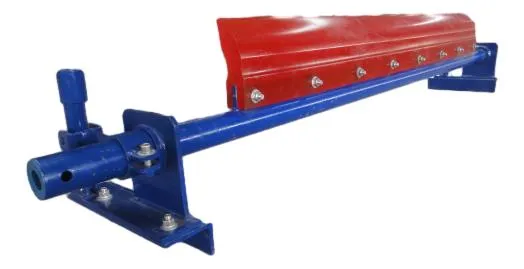 Afrikaans
Afrikaans  Albanian
Albanian  Amharic
Amharic  Arabic
Arabic  Armenian
Armenian  Azerbaijani
Azerbaijani  Basque
Basque  Belarusian
Belarusian  Bengali
Bengali  Bosnian
Bosnian  Bulgarian
Bulgarian  Catalan
Catalan  Cebuano
Cebuano  Corsican
Corsican  Croatian
Croatian  Czech
Czech  Danish
Danish  Dutch
Dutch  English
English  Esperanto
Esperanto  Estonian
Estonian  Finnish
Finnish  French
French  Frisian
Frisian  Galician
Galician  Georgian
Georgian  German
German  Greek
Greek  Gujarati
Gujarati  Haitian Creole
Haitian Creole  hausa
hausa  hawaiian
hawaiian  Hebrew
Hebrew  Hindi
Hindi  Miao
Miao  Hungarian
Hungarian  Icelandic
Icelandic  igbo
igbo  Indonesian
Indonesian  irish
irish  Italian
Italian  Japanese
Japanese  Javanese
Javanese  Kannada
Kannada  kazakh
kazakh  Khmer
Khmer  Rwandese
Rwandese  Korean
Korean  Kurdish
Kurdish  Kyrgyz
Kyrgyz  Lao
Lao  Latin
Latin  Latvian
Latvian  Lithuanian
Lithuanian  Luxembourgish
Luxembourgish  Macedonian
Macedonian  Malgashi
Malgashi  Malay
Malay  Malayalam
Malayalam  Maltese
Maltese  Maori
Maori  Marathi
Marathi  Mongolian
Mongolian  Myanmar
Myanmar  Nepali
Nepali  Norwegian
Norwegian  Norwegian
Norwegian  Occitan
Occitan  Pashto
Pashto  Persian
Persian  Polish
Polish  Portuguese
Portuguese  Punjabi
Punjabi  Romanian
Romanian  Russian
Russian  Samoan
Samoan  Scottish Gaelic
Scottish Gaelic  Serbian
Serbian  Sesotho
Sesotho  Shona
Shona  Sindhi
Sindhi  Sinhala
Sinhala  Slovak
Slovak  Slovenian
Slovenian  Somali
Somali  Spanish
Spanish  Sundanese
Sundanese  Swahili
Swahili  Swedish
Swedish  Tagalog
Tagalog  Tajik
Tajik  Tamil
Tamil  Tatar
Tatar  Telugu
Telugu  Thai
Thai  Turkish
Turkish  Turkmen
Turkmen  Ukrainian
Ukrainian  Urdu
Urdu  Uighur
Uighur  Uzbek
Uzbek  Vietnamese
Vietnamese  Welsh
Welsh  Bantu
Bantu  Yiddish
Yiddish  Yoruba
Yoruba  Zulu
Zulu head pulley tail pulley for belt conveyor
Understanding Head and Tail Pulleys in Belt Conveyors
Belt conveyors are integral components of many industrial processes, enabling the efficient transport of materials from one point to another. At the core of these systems are the head and tail pulleys, which play crucial roles in the conveyor's operation. Understanding their functions, types, and importance can significantly impact the overall efficiency and reliability of a conveyor system.
The Role of Head and Tail Pulleys
Head Pulley The head pulley is located at the discharge end of the conveyor belt. It serves as the driving pulley, which is powered by a motor. As the motor turns the head pulley, it drives the belt forward, transporting materials along the conveyor. The head pulley is typically covered with a rubber or textured surface to provide friction, preventing slippage and ensuring the materials are effectively carried away from the conveyor.
Tail Pulley Located at the loading end of the conveyor, the tail pulley is crucial for maintaining belt tension and guiding the return of the conveyor belt. It helps support the belt and is designed to keep the belt aligned as it moves back to the head pulley for another cycle. The tail pulley generally does not have power applied directly to it; instead, it solely serves to allow the belt to return to the start of the process.
Types of Pulleys
Pulleys can be classified based on several factors, including their design and application. In general, there are two main types of pulleys used in belt conveyors
head pulley tail pulley for belt conveyor

1. Drive Pulleys Found at the head of the conveyor, these pulleys receive power from a motor. They are designed for maximum grip and efficiency in driving the belt forward. Drive pulleys can be further divided into crowned, flat, and lagged pulleys, each offering specific advantages depending on the application.
2. Idler Pulleys These pulleys support the return side of the conveyor belt, minimizing sagging and ensuring proper belt alignment. They can be fixed, adjustable, or even self-aligning, depending on the operational needs of the conveyor system.
Importance of Proper Maintenance
Regular maintenance of head and tail pulleys is essential for the longevity and efficiency of the conveyor system. Common issues such as belt tracking problems, excessive wear, and misalignment can be mitigated with routine inspections and adjustments. Additionally, ensuring that the pulleys are free from debris and properly lubricated can enhance their performance and reduce the likelihood of breakdowns.
Conclusion
In conclusion, head and tail pulleys are vital components of belt conveyor systems. They ensure the smooth transport of materials, maintain belt tension, and provide the necessary friction for effective operation. Understanding their roles, types, and the importance of maintenance can help users maximize the efficiency and lifespan of their conveyor systems. For industries that rely on belt conveyors, investing in high-quality pulleys and maintaining them properly is fundamental to achieving operational success and minimizing downtime. Whether in manufacturing, mining, or logistics, the importance of these components cannot be overstated.
-
Revolutionizing Conveyor Reliability with Advanced Rubber Lagging PulleysNewsJul.22,2025
-
Powering Precision and Durability with Expert Manufacturers of Conveyor ComponentsNewsJul.22,2025
-
Optimizing Conveyor Systems with Advanced Conveyor AccessoriesNewsJul.22,2025
-
Maximize Conveyor Efficiency with Quality Conveyor Idler PulleysNewsJul.22,2025
-
Future-Proof Your Conveyor System with High-Performance Polyurethane RollerNewsJul.22,2025
-
Driving Efficiency Forward with Quality Idlers and RollersNewsJul.22,2025





























